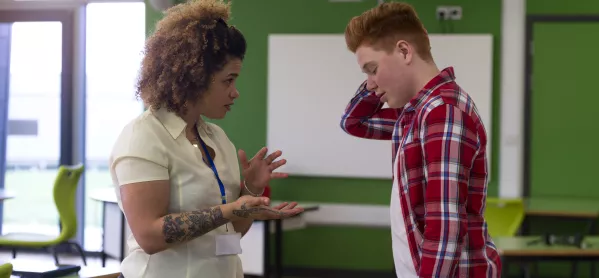As educators, we spend much of our time pushing pupils to deepen their understanding and broaden their learning around different subjects. Within whichever subject or key stage we teach, our professional lives are consumed with the aim of expanding and enriching the learning within our classroom.
Yet this same approach is often not applied in as great a depth in supporting pupils to understand their own and other’s behaviour.
Our education system is structured around a need to cover the expectations of the national curriculum. But what about the wider learning experiences that we are offering to pupils? The need for mental health awareness has never been higher and yet the system is still driven by a focus on attainment data and progress scores; it has not prepared us for the need to be vigilant in assessing and monitoring the emotional wellbeing of the pupils in our classrooms.
The answer to this, I believe, is to start seeing student behaviour as a form of communication. Our curriculum primarily focuses on the academic abilities of our pupils, but we must ensure that we are giving the same attention to “reading” their behaviour in order to support them with their mental health.
Behaviour management: What are students communicating?
The overarching message from theories of behaviour, here, is the importance of the quality of the teacher-student relationship. To be able to “read” the communication delivered through behaviour, teachers need to know those pupils inside and outside of the classroom, to have an idea of the potential issues surrounding that child as an individual.
While this might be possible for a primary teacher, secondary teachers may find it impossible to know the everyday experiences of all the students that enter their classroom. However, this doesn’t mean that you are unable to establish relationships with your students and begin to see the nuanced differences that may be occurring in the behaviour that they show.
What can teachers do to get better at seeing behaviour as communication and making sense of the messages encoded in that behaviour? Here are some steps that you can implement into your everyday routines to become more fluent at reading behaviour.
1. Greet every child that comes into your classroom
This is something you probably do already, but its importance cannot be overstated. Those first interactions with pupils as they enter your classroom space (or you enter theirs, depending on your current set-up) can tell you so much, in terms of what your students might be feeling. Have they given you eye contact? Have they returned your smile? How are they walking? Are they hunched over or holding their head high? Do they look tired? These will be the first indicators of anything that might be going on with a pupil.
2. Understand the ‘difficult’ pupils better than anyone else
The pupils who push the boundaries put in place by the school are trying to tell you something. They may not be able to communicate it in any way other than through their behaviour, as they react to how they are feeling. Get to know them and, as you do, work to interpret what their different behaviours are trying to tell you that they are unable to verbalise. Always keep the question at the front of your mind: “What is this behaviour trying to tell me?”
3. Consistency is key
In the ever-changing new circumstances that we find ourselves in, we are all relying on the stability of routines and consistency to keep us grounded. Your pupils need to find this in your classroom; they need to feel safe. By being consistent with your expectations, both academically and behaviourally, you are giving them the consistency they need to feel safe and relaxed within your lessons.
Communicating how you are feeling and knowing why you are acting a certain way is hard for many, young or old. Therefore, as educators, we need to be able to read the language of behaviour so that the pupils in our care can get the support they need.
Sophie Tales is primary intervention lead for The Mead Educational Trust




